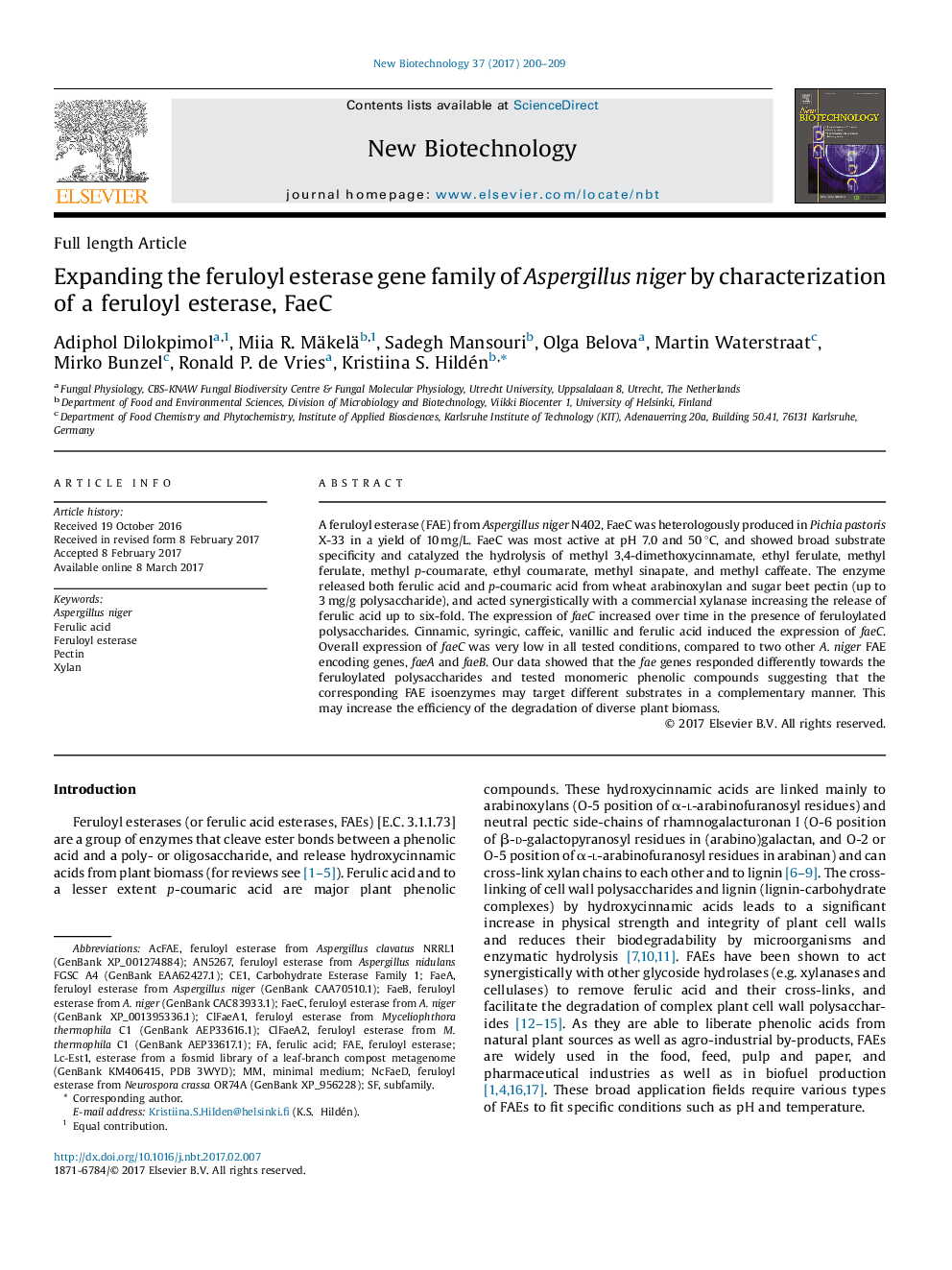| کد مقاله | کد نشریه | سال انتشار | مقاله انگلیسی | نسخه تمام متن |
|---|---|---|---|---|
| 6452869 | 1361497 | 2017 | 10 صفحه PDF | دانلود رایگان |

- New feruloyl esterase from Aspergillus niger (FaeC) was produced in Pichia pastoris.
- FaeC possessed broad substrate specificity towards synthetic FAE substrates.
- FaeC was most active at neutral pH 7.0 and 50 °C.
- FaeC synergistically acted with xylanase to release ferulic acid from xylan.
- FaeC showed promising potential for plant biomass processing applications.
A feruloyl esterase (FAE) from Aspergillus niger N402, FaeC was heterologously produced in Pichia pastoris X-33 in a yield of 10 mg/L. FaeC was most active at pH 7.0 and 50 °C, and showed broad substrate specificity and catalyzed the hydrolysis of methyl 3,4-dimethoxycinnamate, ethyl ferulate, methyl ferulate, methyl p-coumarate, ethyl coumarate, methyl sinapate, and methyl caffeate. The enzyme released both ferulic acid and p-coumaric acid from wheat arabinoxylan and sugar beet pectin (up to 3 mg/g polysaccharide), and acted synergistically with a commercial xylanase increasing the release of ferulic acid up to six-fold. The expression of faeC increased over time in the presence of feruloylated polysaccharides. Cinnamic, syringic, caffeic, vanillic and ferulic acid induced the expression of faeC. Overall expression of faeC was very low in all tested conditions, compared to two other A. niger FAE encoding genes, faeA and faeB. Our data showed that the fae genes responded differently towards the feruloylated polysaccharides and tested monomeric phenolic compounds suggesting that the corresponding FAE isoenzymes may target different substrates in a complementary manner. This may increase the efficiency of the degradation of diverse plant biomass.
121
Journal: New Biotechnology - Volume 37, Part B, 25 July 2017, Pages 200-209